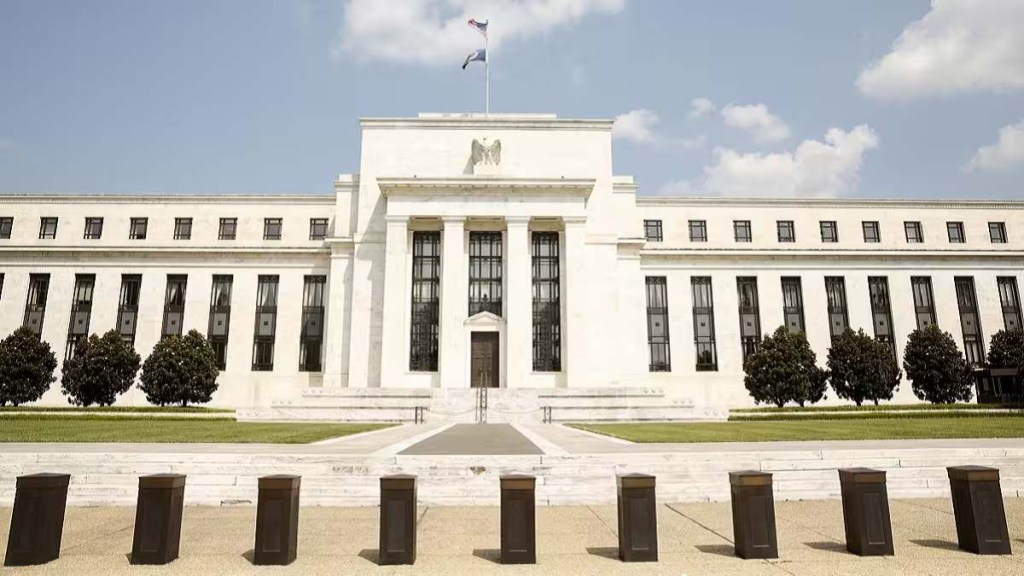Its a data heavy week in terms of rate decisions with global central banks expected to take a decision on the key interest rates. The question is whether they will go with monetary policy tightening, or will cut the repo rate or will continue to be on a pause, given the current inflationary pressures.
US Federal Reserve
This week, the FOMC statement and economic projections will be in focus for clues on policy outlook as recent US data releases have largely shown resilience and hence revived bets of a soft landing despite higher interest rates. The Fed Policy is expected on late Wednesday, India time. Faster growth, cooler inflation and a job market that won’t quit have set the stage for an updated batch of forecasts from the Federal Reserve. Analysts say that this meeting decision is likely to reflect their growing faith in prospects for an economic soft-landing. According to latest Reuters reports, the US Central Bank may leave short-term interest rates in the current 5.25-5.50 per cent range but the main unknown is how policymakers reshape their stale forecasts from three months back. However, per a poll by Financial Times, more than 40 per cent of those surveyed said they expected the Fed to raise rates twice or more from the current benchmark level of 5.25-5.5 per cent, a 22-year high. During the last FOMC meeting in July, the US Fed had raised its target interest rate by 25 basis points to 5.25- 5.50 per cent.
Bank of England
Bank of England (BoE), meanwhile, is likely to raise interest rates amid high inflation. Financial markets and economists are expecting the BoE to raise interest rates by another quarter point at its meeting on Thursday, taking the cost of borrowing to 5.5 per cent, its highest level since early 2008. Despite comments from BoE rate setters over the past month that were designed to give them the option to hold rates at 5.25 per cent, expectations are that the BoE will go for another rate hike. Earlier on 3 August 2023, the Bank of England’s Monetary Policy Committee (MPC) raised interest rates for the 14th meeting in a row. Rates were increased by 0.25 percentage points to 5.25 per cent, the highest they have been since April 2008. The MPC had voted 6-3 for the move, with two of the minority voting for a 0.5 percentage point rise and the other for no change in rates. The results of the next MPC meeting will be announced on 21 September. UK’s inflation stood at 7.9 per cent in June, down from its peak of 11.1 per cent in October 2022, but still well above the MPC’s 2 per cent target.
Bank of Japan
Bank of Japan (BoJ) policy may be watched closely as Governor Kazuo Ueda recently hinted at the possibility of an earlier end to negative interest rates. According to a Bloomberg survey, economists said that the BoJ will stand pat on policy at its meeting, with few expecting authorities to abandon the sub zero rate by the end of June. Last month, 31 per cent had predicted a rate hike within that time frame. Some 9 per cent of respondents in the latest survey see the BOJ adjusting or discarding its yield curve control (YCC) mechanism in October. The Bank of Japan (BoJ) had kept its key short-term interest rate unchanged at -0.1 per cent and that of 10-year bond yields at around 0 per cent in its July meeting by unanimous vote but decided to make its yield curve control policy more flexible amid efforts to improve the sustainability of stimulus policy. The Bank of Japan is expected to announce its decision on Friday.

